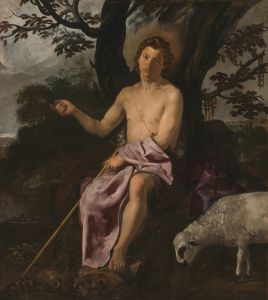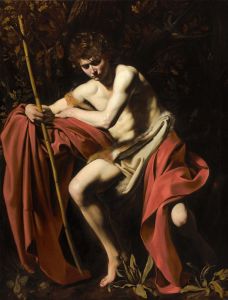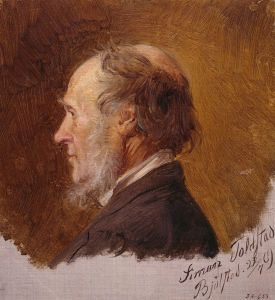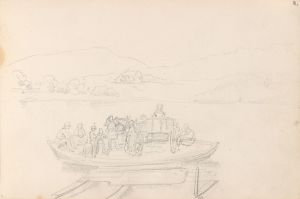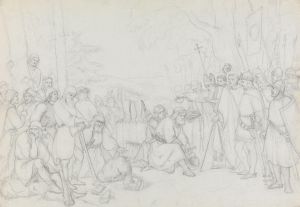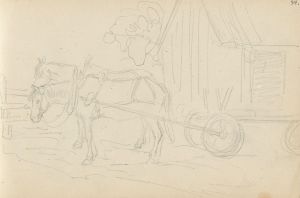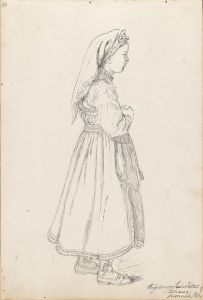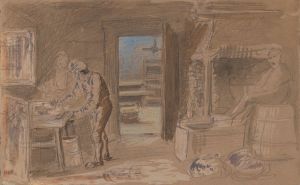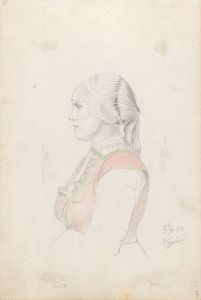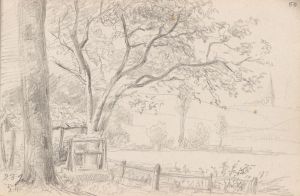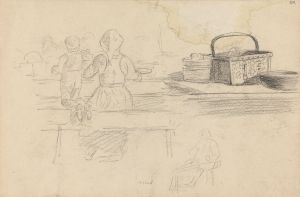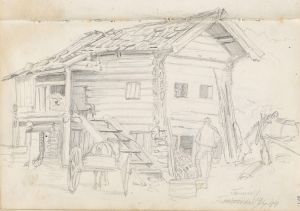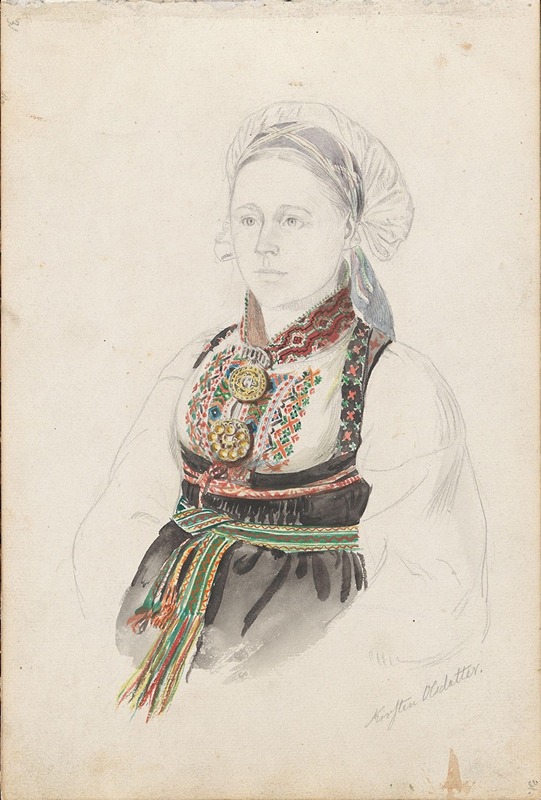
Kirsti Olsdotter, Heddal
A hand-painted replica of Adolph Tidemand’s masterpiece Kirsti Olsdotter, Heddal, meticulously crafted by professional artists to capture the true essence of the original. Each piece is created with museum-quality canvas and rare mineral pigments, carefully painted by experienced artists with delicate brushstrokes and rich, layered colors to perfectly recreate the texture of the original artwork. Unlike machine-printed reproductions, this hand-painted version brings the painting to life, infused with the artist’s emotions and skill in every stroke. Whether for personal collection or home decoration, it instantly elevates the artistic atmosphere of any space.
Adolph Tidemand (1814–1876) was a prominent Norwegian painter known for his depictions of Norwegian folk life and traditions during the 19th century. One of his works, Kirsti Olsdotter, Heddal, is a painting that reflects his interest in capturing the cultural and historical essence of rural Norway.
The painting portrays Kirsti Olsdotter, a woman from the Heddal region in Telemark, Norway. Heddal is known for its rich cultural heritage, including the famous Heddal Stave Church, which is the largest stave church in Norway. Tidemand often traveled to rural areas like Heddal to study local customs, clothing, and architecture, which he then incorporated into his art. His works are celebrated for their attention to detail and their ability to convey the dignity and character of the people he depicted.
Kirsti Olsdotter, Heddal is an example of Tidemand's focus on traditional Norwegian costumes, known as bunads, which vary by region. The painting showcases the intricate patterns and vibrant colors of the Heddal bunad, reflecting the craftsmanship and cultural identity of the area. Tidemand's ability to document these traditional garments has made his works valuable historical records of Norwegian folk culture.
The painting is part of Tidemand's broader body of work that contributed to the national romanticism movement in Norway. This movement sought to celebrate and preserve Norwegian identity during a time when the country was seeking independence and defining its cultural heritage. Tidemand's art played a significant role in shaping the perception of Norwegian rural life and traditions, both within Norway and internationally.
Today, Adolph Tidemand's works, including Kirsti Olsdotter, Heddal, are held in high regard and can be found in various museums and collections. His paintings continue to be studied and appreciated for their artistic merit and their contribution to the understanding of 19th-century Norwegian culture. However, specific details about the current location or ownership of Kirsti Olsdotter, Heddal are not widely documented.






